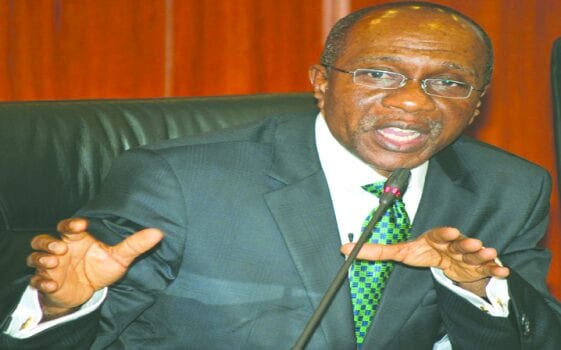CBN lends N662b to banks for liquidity control – Commercial and merchant banks accessed N662.44 billion loans from the Central Bank of Nigeria (CBN) to control their liquidity and maintain stability, the CBN’s Economic report for last November has shown.
The report also showed that the loans, which came through the Standing Lending Facilities (SLF), were meant to allow the lenders raise up their positions.
Daily average was N41.40 billion from November 1 to 26. Daily request ranged from N0.48 billion to N126.74 billion. Total interest earned was N0.37 billion.
The SLF is an overnight CBN credit available on banking days between 2 pm and 3.30 pm, with settlement done on same day value. Funds were sourced mainly from time, savings and foreign currency deposits, as well as accretion to unclassified assets.
The funds were used, largely, to extend credit to the private sector and payment of claims on demand deposit. The rates for Standing Deposit Facilities (SDF) and SLF remained at nine and 16 per cent, respectively.
The report said the total SLF granted, during the review period, was N662.44 billion (made up of N490.29 billion direct SLF and N172.15 billion Intraday Lending Facilities (ILF) converted to overnight repurchase agreement.
According to the report, the trend at the CBN standing facilities window showed a decline at the SLF window, as against the increased patronage at the SDF window. Applicable rates for the SLF and SDF remained at 15.50 and 8.50 per cent.
The total SDF granted during the review period was N443.63 billion with a daily average of N26.09 billion during the transaction days. Daily request ranged from N6.30 billion to N42.75 billion. Cost incurred on SDF stood at N0.16 billion.
Further analysis of the report showed that total assets and liabilities of commercial banks amounted to N41,425.1 billion as at last October, showing 4.6 per cent increase, compared with the level at the end of the preceding month.
Funds were sourced, mainly, from increase in unclassified liabilities, and the mobilisation of time, savings and foreign currency deposits. The funds were used, mainly, to acquire unclassified assets, foreign assets and to boost reserves.
Also, commercial banks’ credit to the domestic economy rose by 0.6 per cent to N22,261.0 billion by October, last year, compared with the level at the end of the preceding month. The development was attributed to the rise in its claims on the private sector.
Total specified liquid assets of banks stood at N14.2 trillion at last October, representing 59.3 per cent of their total current liabilities.
At that level, the liquidity ratio was 0.9 percentage point lower than the level at the end of the preceding month, and was 29.30 percentage points above the stipulated minimum liquidity ratio of 30 per cent.
The loan-to-deposit ratio, at 61.9 per cent, was 0.3 percentage point below the level at the end of the preceding month and was lower than the maximum ratio of 80.0 per cent by 18.10 percentage points.
Also, at N858.92 billion, the estimated federally-collected revenue (gross) in November 2019 fell below both the monthly budget estimate of N1,246.07 billion and the preceding month’s receipt of N894.09 billion by 31.1 per cent and 3.9 per cent, respectively. The decline, relative to the monthly budget estimate, was attributed to shortfall in both oil and non-oil revenues.
Oil receipts, at N489.08 billion or 56.9 per cent of total revenue, was below both the monthly budget of N798.83 billion and the preceding month’s receipt of N577.30 by 38.8 per cent and 15.3 per cent, respectively.
The decrease in oil revenue, relative to the monthly budget estimate, was attributed to shut-ins and shut-downs at some Nigeria National Petroleum Corporation terminals, due to pipeline leakages and maintenance.































